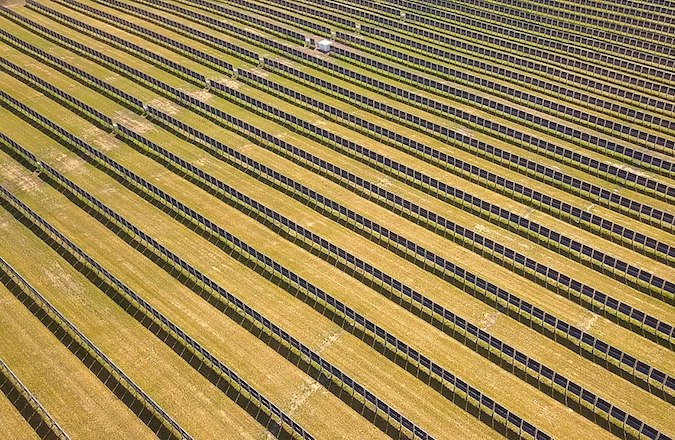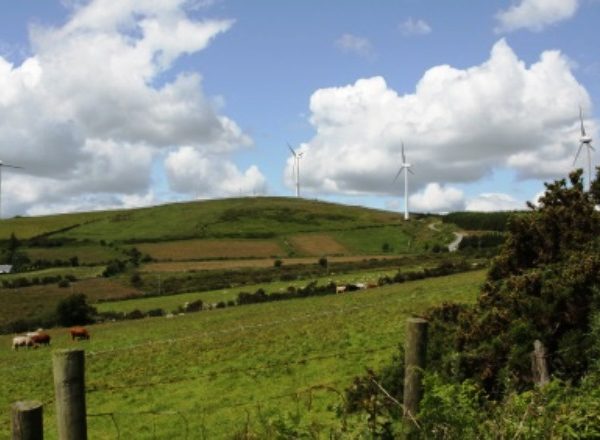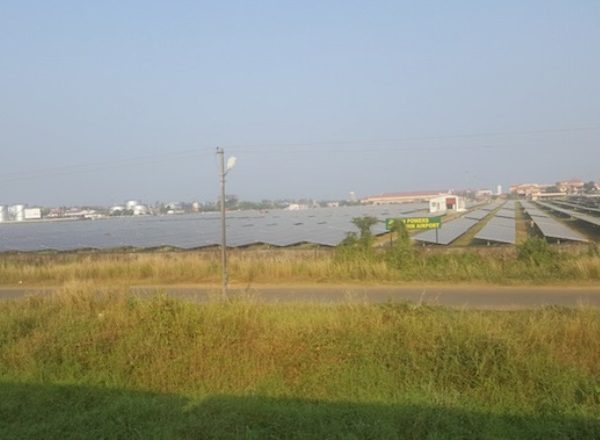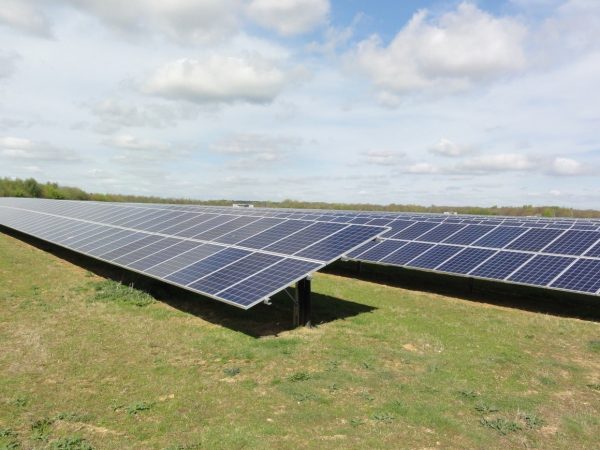Pager Power has recently undertaken a comparison of glare guidance used in Germany and Pager Power’s own glint and glare guidance, used in the UK.
Figure 1: Agrivoltaics solar plant, Germany. [4]
The German glare guidance comes in the form of the Guideline for the Ministry of Agriculture, Environment and Climate Protection for the measurement and assessment of light Immissions which is published in conjunction with the Federal Immission Control Act.
The UK government has yet to produce similar guidance in the UK. As such, the Pager Power glint and glare guidance is the only guidance of its kind in the UK and is currently widely used for solar developments in the UK and overseas.
The German glare guidance focuses primarily on dwellings and other buildings where the people inside them may experience glare. According to the Federal Immission Control Act, a ‘significant nuisance’ is caused if glare is experienced for more than 30 minutes on any given day or 30 hours per year. The Pager Power guidance considers similar factors but uses a figure of 60 minutes on any given day as a threshold for moderate or high impact. Moderate or high impact is Pager Power’s equivalent of a ‘significant nuisance’ and in such a situation mitigation is recommended or required respectively. Furthermore, instead of 30 hours per year, the Pager Power Guidance uses glare being experienced for at least 3 months (90 days) of the year as a threshold for moderate and high impact glare. Pager Power’s guidance has been informed both by previous experience and by a literature review of other similar guidance documents within the industry, such as guidance concerning shadow flicker from wind turbines.
The German guidance also states that glint and glare is not considered to be a problem if the source appears to be in the same place as the sun itself. More specifically, if the angle between the ray of light from the sun and the ray of glare from the solar panel is less than 10 degrees, the instance of glare is discounted. In this way, the Pager Power guidance is more conservative as no such provision is made in the latter guidance.
Both sets of guidance have methods of identifying dwellings or other buildings as potential receptors of glint and glare. Dwellings to the North of a south-facing panel area are generally excluded from consideration in both sets of guidance. The advice does differ from the Pager Power approach however, inasmuch as the guidance cites 100 metres as a suitable range over which to consider glare effects. The Pager Power guidance is again more conservative, giving a figure of 1000m.
Generally speaking, the Pager Power guidance and the German glare guidance agree quite closely and take similar factors into consideration when assessing glare towards dwellings, with the Pager Power guidance being more conservative with regards when to consider glare, and the German guidance more conservative regarding the duration of glare.
About Pager Power
Pager Power has undertaken more than 1000 glint and glare assessments in the UK and overseas. Pager Power has experience assessing potential glare effects in accordance with its own glare guidance, and other guidelines and regulations. These include the FAA 2013 and 2021 glare guidance concerning glare towards aviation based receptors, and the German glare guidance discussed here.
To download the latest edition of Pager Power’s Glint and Glare Guidance, click here.
References
[1] Federal Immission Control Act 2021. Bundesgesetzblatt 1:69. September 2021.
[2] Guideline for the Ministry of Agriculture, Environment and Climate Protection for the measurement and assessment of light Immissions, 2014.
[3] Pager Power Glint and Glare Guidance v4, Danny Scrivener, 2022.
[4] Tobi Kellner. July 23, 2020. CC BY-SA 4.0 on Wikicommons. Last accessed on 15th March 2023. Available at: Aasen agrivoltaics solar plant with walls of vertical bifacial modules near Donaueschingen Germany 9.jpg




